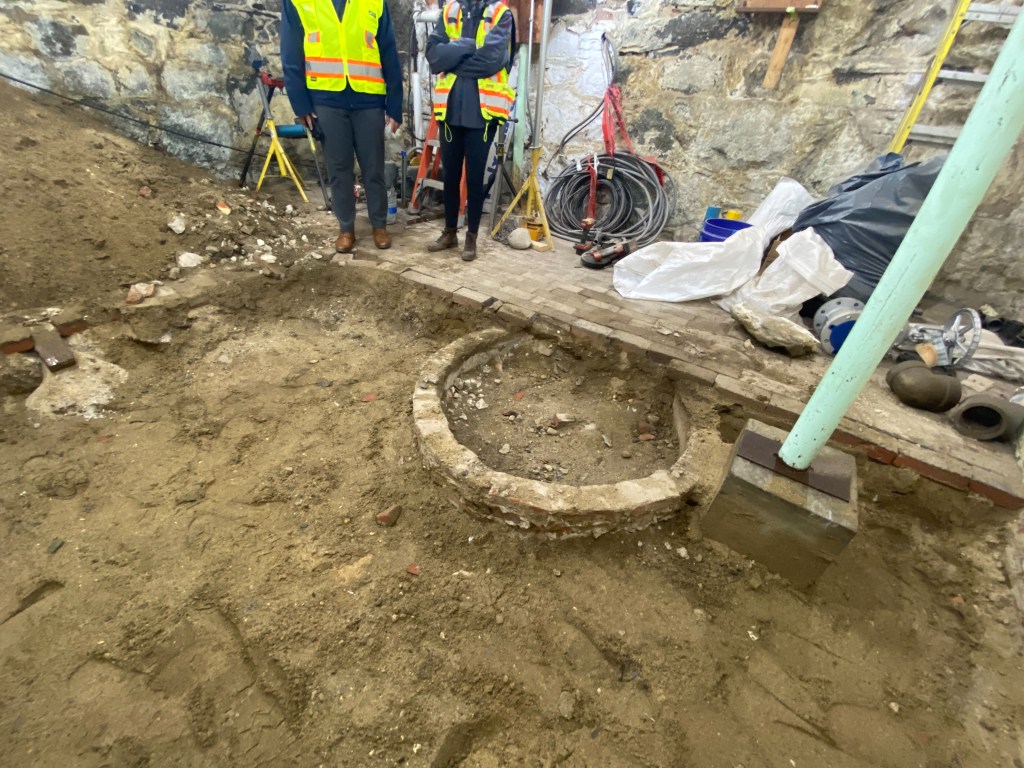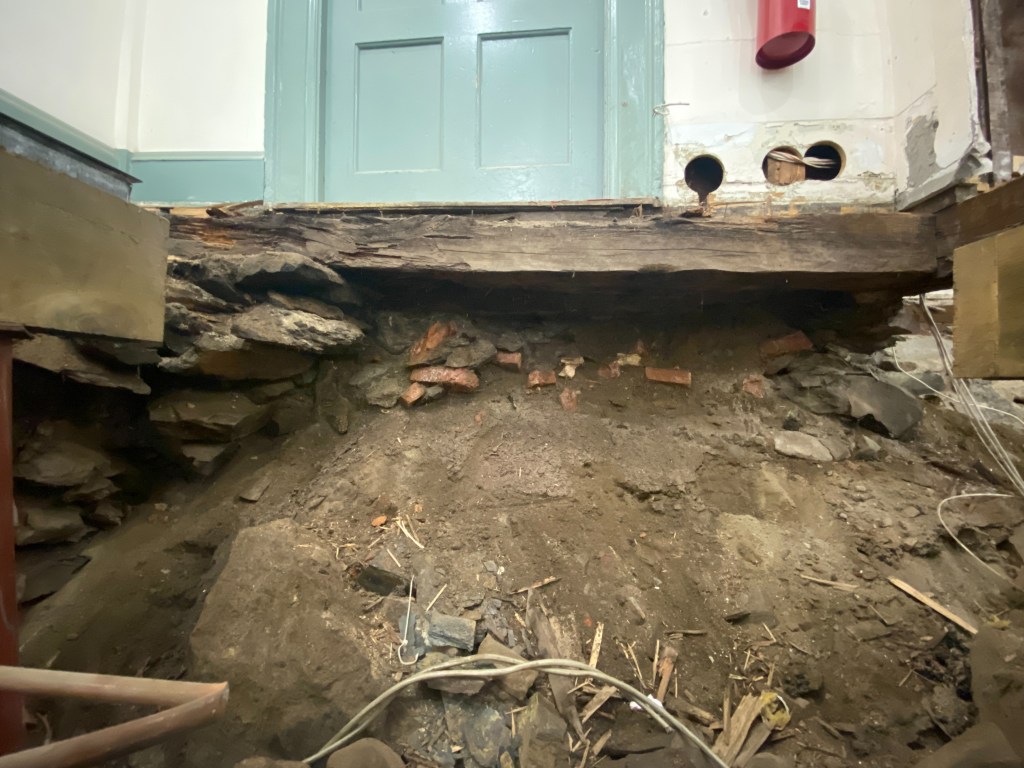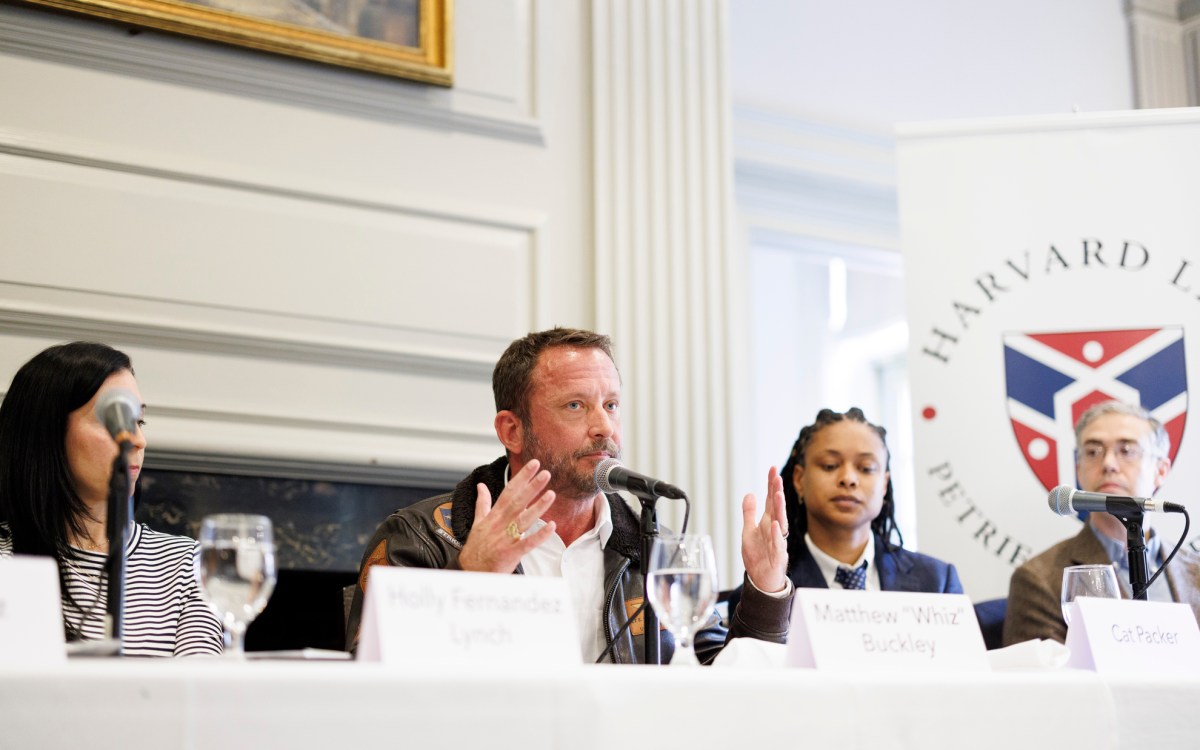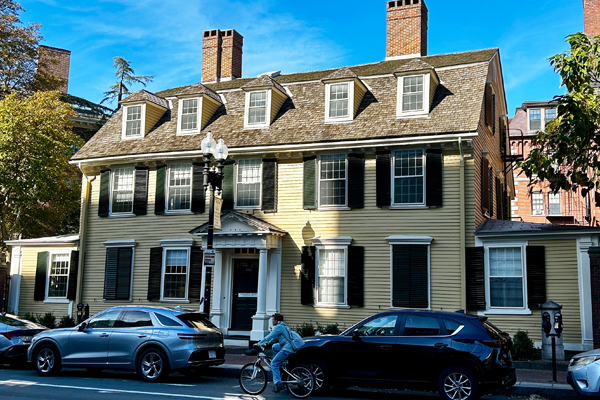Major renovations to one of Harvard’s most recognizable and historic buildings are now complete, just in time for its 300th anniversary. Wadsworth House is the second oldest surviving University building and the only remaining wooden structure within Harvard Yard. The colonial-style building, which faces Massachusetts Avenue, and is painted in its distinctive yellow, had been undergoing repairs since the summer of 2024. But what began as a modest project to fix some sagging floors and improve the HVAC system, soon expanded to include nearly all aspects of the structure, right down to the colonial-era foundation. As one might imagine, given the building’s history and age, there were many surprises along the way.
Project Manager Miguel Escuer Velasquez from Harvard University Housing and Real Estate oversaw the project. Despite being structurally sound, the building had a pretty hefty slope. “We used to joke that if you sat on one side of the House you could roll to the other side,” said Escuer Velasquez. The structure was much smaller when it was originally built in 1726 as a home for Harvard’s president Benjamin Wadsworth. In 1775, Wadsworth House even served as a temporary headquarters for Gen. George Washington. Through the centuries it was gradually built-out and expanded to become the structure we know today that houses a number of University offices.

As for those surprises, “during the interior demolition, we found an abandoned water well which had just been built over,” Escuer Velasquez explained. “We also discovered hidden windows, a couple of flagpole foundations, three actual roofs that, again, were just covered over as more rooms were added.” Much of the building was also supported by the original rubble foundation. In some localized areas the foundation was so badly eroded that sections of the building were essentially floating.

Facing an October 2025 deadline, and the building’s anniversary in 2026, the team developed a comprehensive plan to rearrange spaces, move walls, repair the foundation, and install new HVAC, fire protection, lighting, electrical, and plumbing systems. The building is now more comfortable, safer, and almost entirely accessible. “Within such an old building, making it ADA (Americans with Disabilities Act) compliant was a very tricky process,” said Escuer Velasquez. “But Wadsworth now has wider doorways, a wheelchair lift, as well as an accessible kitchenette and bathroom making it a far more usable space.”
With the renovations complete and successful, Wadsworth House is once again on firm footing. While the renovations might not be too apparent to the average passerby, the incredible effort to preserve this cherished piece of Harvard’s history hasn’t gone unnoticed.






